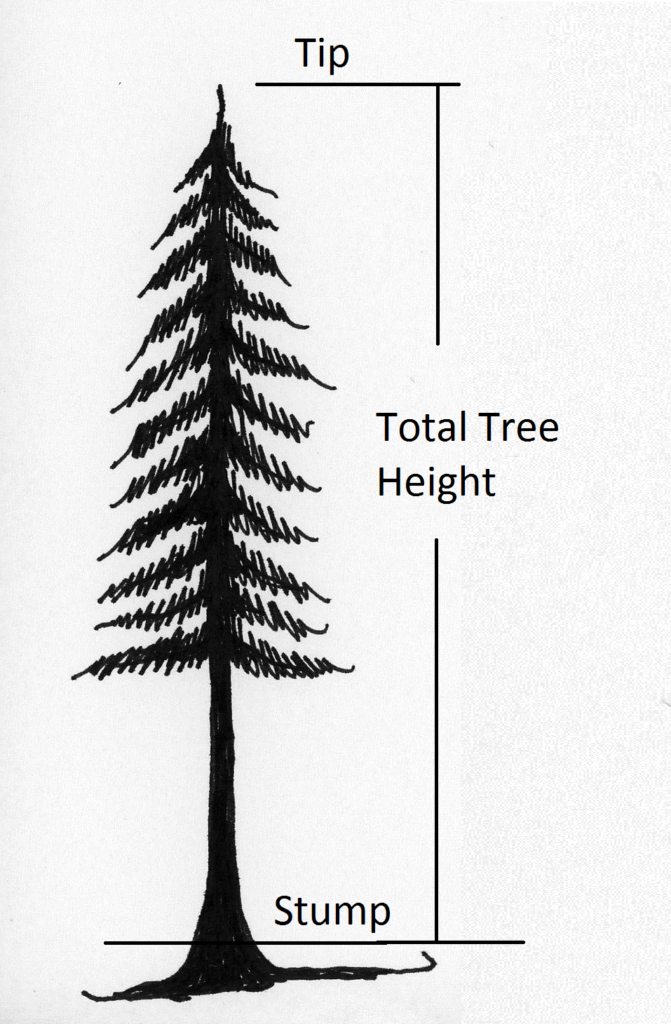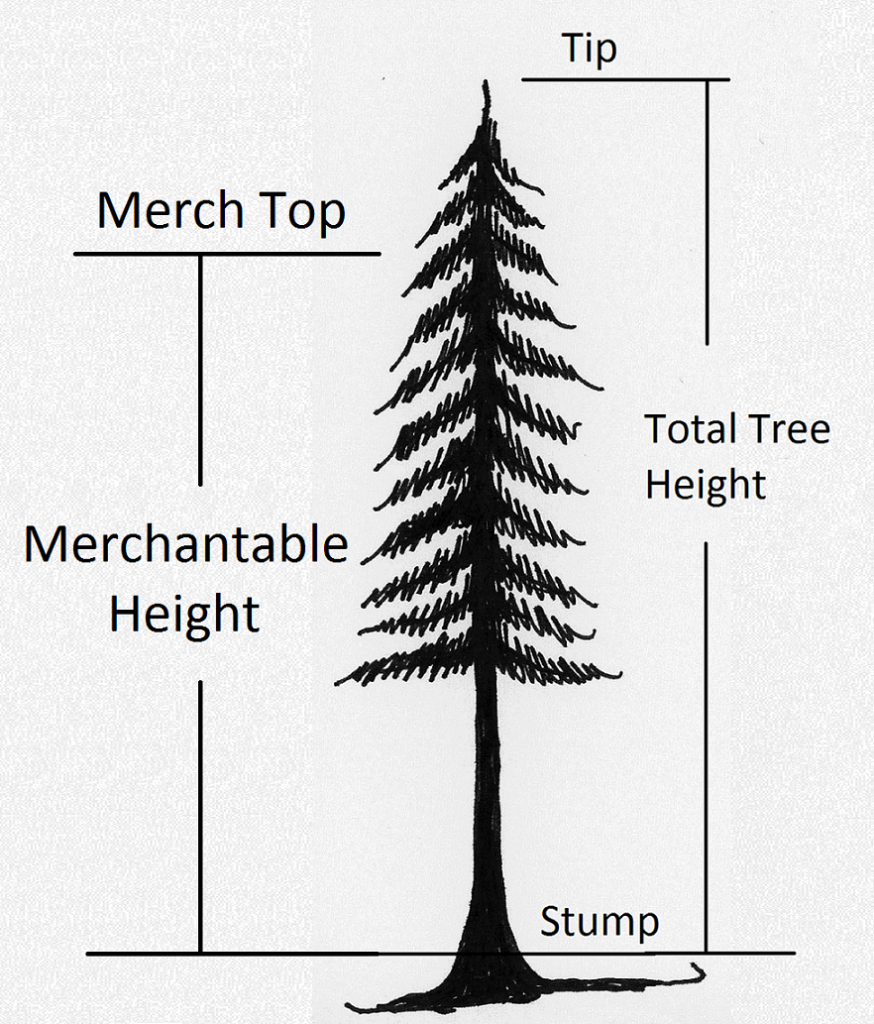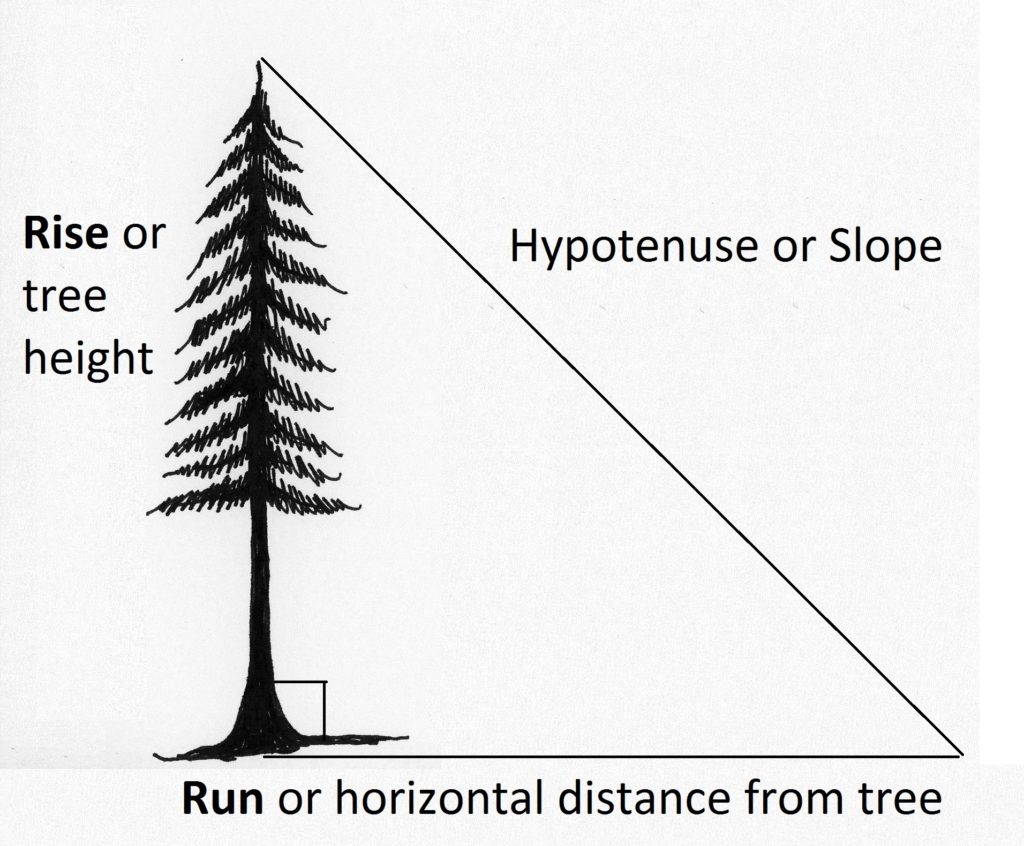2.2 Determining Tree Height
Most forest applications use one of two types of tree height measurements:
1. Total height. Total height is the height of a tree from its stump to its tiptop (Figure 2.1). A one-foot stump is standard, although there are times when another base is used.

2. Merchantable height. Merchantable height is the height of a tree from its stump to a diameter at which the trunk is too small to be marketable (Figure 2.2). This “merchantable top” diameter is commonly six inches or some percentage of a diameter low in the tree, such as diameter at breast height (DBH; see Chapter 3). “Taper height” is very similar, without the emphasis on the top diameter being the end of merchantability.

The principles and techniques for measuring any of these heights are essentially the same. This text will focus on total height.
So, how does one figure out how tall a tree is? Surely not by climbing each tree with a tape or measuring its shadow. A simple, accurate, and rapid measuring method is needed to make tree height a feasible part of our inventory data. Here is the easiest way for good precision:
In determining tree height, a tree is presumed perpendicular to the ground (Figure 2.3). Therefore, the tree makes a right angle with the ground, and a right triangle can be drawn from it. The triangle’s three sides are: 1) the tree, 2) a horizontal distance along the ground, and 3) an imaginary diagonal line running from the top of the tree to the ground. Likewise, the tree’s height can be considered the rise and the horizontal ground distance the run. (Sound familiar?) If a horizontal distance from the tree to a place where we can see the tree’s top can be measured, the tree’s height can be determined using %slope.


